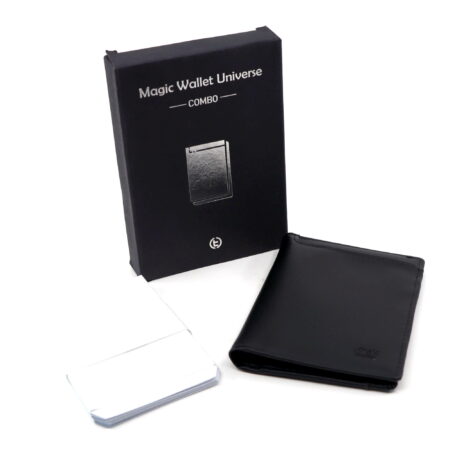
This is a well thought out wallet that is professionally made, looks good and, best of all, the price is very reasonable 🙂
Click here for more information.

This is a well thought out wallet that is professionally made, looks good and, best of all, the price is very reasonable 🙂
Click here for more information.
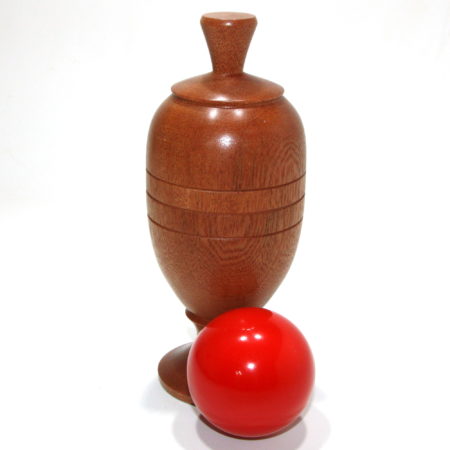
A nicely made “budget” Ball Vase from Merlin’s Magic and their Premier Range. This is the larger one almost 7″ high with a 2″ red snooker ball. It does not compare with craftsmen like Colin Rose, but if you were looking for a reasonably priced ball vase that works perfectly and still looks nice this would be a contender.
Click here for more information.
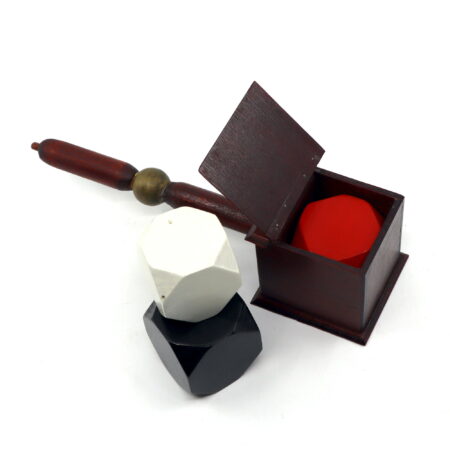
Thayer’s Great Ballot Box Mystery c. 1916 was hailed as The Wonder Trick of 1916 and what a beauty it was. Louis Gaynor reproduced one of these for Stevens Magic here.
This version was one of the very early items created by Thomas Pohle when he had a workshop in Berlin. It was built as a prototype after seeing the effect in Dr. Albo 04 that he borrowed from his magic friend “Braco” (Ralf Wichmann). A few years later when fellow countryman, Willi Wessel, was renting some space in his workshop, Thomas gave it to Willi. I recently purchased it directly from Willi. This is the only version that Thomas built.
It still works though the handle design is a little fragile and Thomas tells me he would build it a little differently today – of course he was a very young man back then and and has had another 44 years of experience since 🙂
Unlike the original Thayer version, although it is fine for the spectator to handle briefly it cannot be examined as thoroughly and the gimmick is not designed to be removed during performance as with the Thayer version.
Click here for more information.
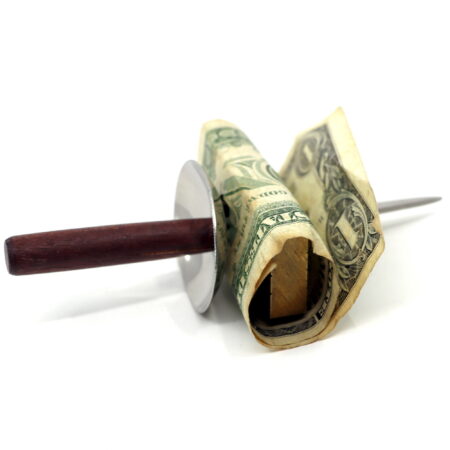
This is an interesting routine for the Matchbox Penetration first created by Jose M. Llacer. I think you can have some fun with the spectator’s ability to not remove the sword from the block, unless they believe in magic 🙂
Click here for more information.
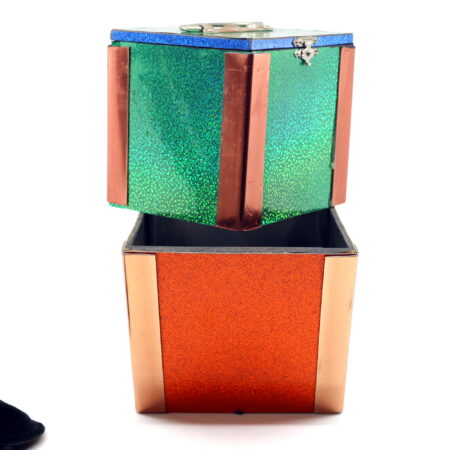
These boxes were designed by Roy Roth for his cabaret act and they are very compact. The loading mechanism is very similar to Himber’s Her Majesty’s Box (c. 1945) which has also been used by Viking Mfg. and Davenport’s.
These work well but the quality is not as fine as Himber’s original or the later versions. But it is quite amazing how small the boxes are. However, don’t confuse this with Roy Roth’s other Nest of Boxes and his Prediction Chest/Nest of Boxes which are have also been called Nest of Boxes in R.A.R. magic adverts and catalogs. This is the first version I have seen of this style.
Click here for more information.
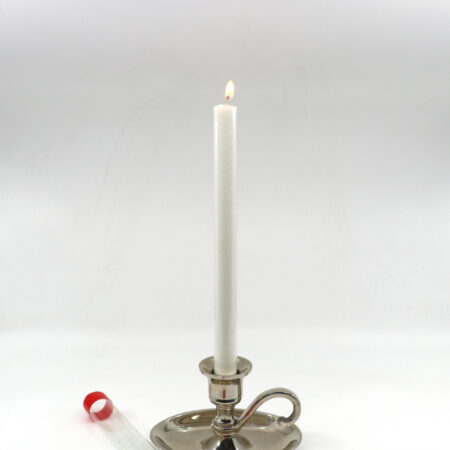
What a clever idea from Magicraft. This is about as clean and effective approach you can come up with to turn a candle into salt and no wonder it was a complete sell-out at Magi-Fest when it was first released in 1974. Maybe not mechanically clever, but you have to admire the solution for this effect ?
Magicraft Products was a small dealer and manufacturer founded by Tim Dereme in North Canton, Ohio c. 1966. As far as I can tell they were in business until c. 2004.
Click here for more information.

Created by Karl-Heinz Tanczer who is one of founders of the amazing German Magic Manufacturer and Dealer Future Magic who produce a very solid selection of fine quality magic that is shipped world-wide. Before Future Magic Karl-Heinz Tanczer created magic for Eckhard Boettcher among others.
This is the latest version of Excalibur – the main pedestal weighs exactly half of the original Excalibur (from 9.6oz to 4.8oz) . Often reducing the weight of a prop is a good thing, and there is no doubt the original is heavy. However, I have used the original for years and I find that the heavier version is easier to use and more convincing because of the very solid base. You can still perform the same effect with the new one, but if you can I would track down one of the originals. The original also has a nice brass handle which I think looks better (the final photo shows both versions side by side).
Click here for more information.

This effect and method was invented by George Lorimer and published in the British monthly periodical The Magician Monthly as The Crown Jewels of Crashbania and subtitled: A Regular Royal Robbery (pg. 72, May, 1928). Lorimer’s routine had quite a lot more going on than the eventual dealer versions including changing the large rubies into a shower of smaller rubies, a British flag to cover the crown, the production of some large silks, and a cage complete with Canary 🙂
However, the key methods of the rubies appearing in the crown and vanishing from the presentation case are used in both dealer versions I have seen. The first dealer version that I am aware of was released by Harry Stanley c. 1953 as Royal Robbery and routined by Arthur Leo.
Supreme Magic released their first version c. 1968 through arrangement with Harry Stanley and still based on the Arthur Leo routine, then later as they purchased Stanley’s exclusive copyrights c. 1972 they released other tweaks and changes. This version, though brand new, comes from c. 1992 with the addition of the Tom Sellers’ idea to vanish the silks.
Supreme’s version is well made but does not have quite the elegance of Stanley’s Royal Robbery and only includes three jewels as opposed to four (look at the final photo for comparison of the crowns). But the routine is similar with a few extra tweaks including the cardboard card instead of hanky to cover up the crown. One of the other 1992 changes is the vanish of the jewels from a silk and tumbler. To be honest I could have left that out as I didn’t find the method that convincing (but I have not actually performed it to children so maybe it goes down very well in reality).
But, with or without the vanish, this is a great routine for the younger children and will entertain them and they will have plenty of fun along the way. It is very topical right now with the Coronation of King Charles III 🙂
Click here for more information.

The original version of this clever penetration was invented by Mark Jacobs and built by John Snyder c. 1943. That version used a frame and was built for parlor and stage. This version from Sam Dalal in India is quite stripped down and uses just three gleaming perspex plaques and a ribbon.
These are very nice quality and are easy to perform with.
Click here for more information.
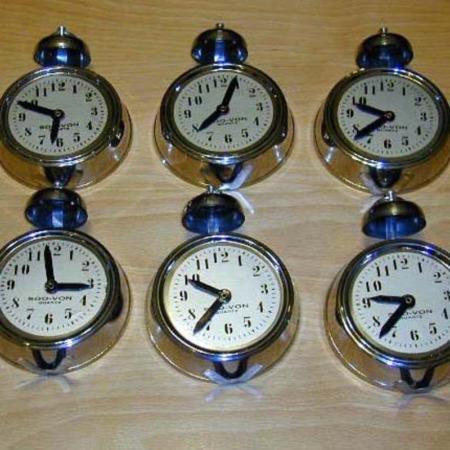
This is a very nice set of clocks for production. They are well made, light and nest into a small space ready to be produced from the smallest production box. Even quite close-up these look real. They would make a great ending to any standard silks production when the last thing the audience is expecting is six full sized alarm clocks 🙂
Click here for more information.
By continuing to use the site, you agree to the use of cookies. more information
The cookie settings on this website are set to "allow cookies" to give you the best browsing experience possible. If you continue to use this website without changing your cookie settings or you click "Accept" below then you are consenting to this.